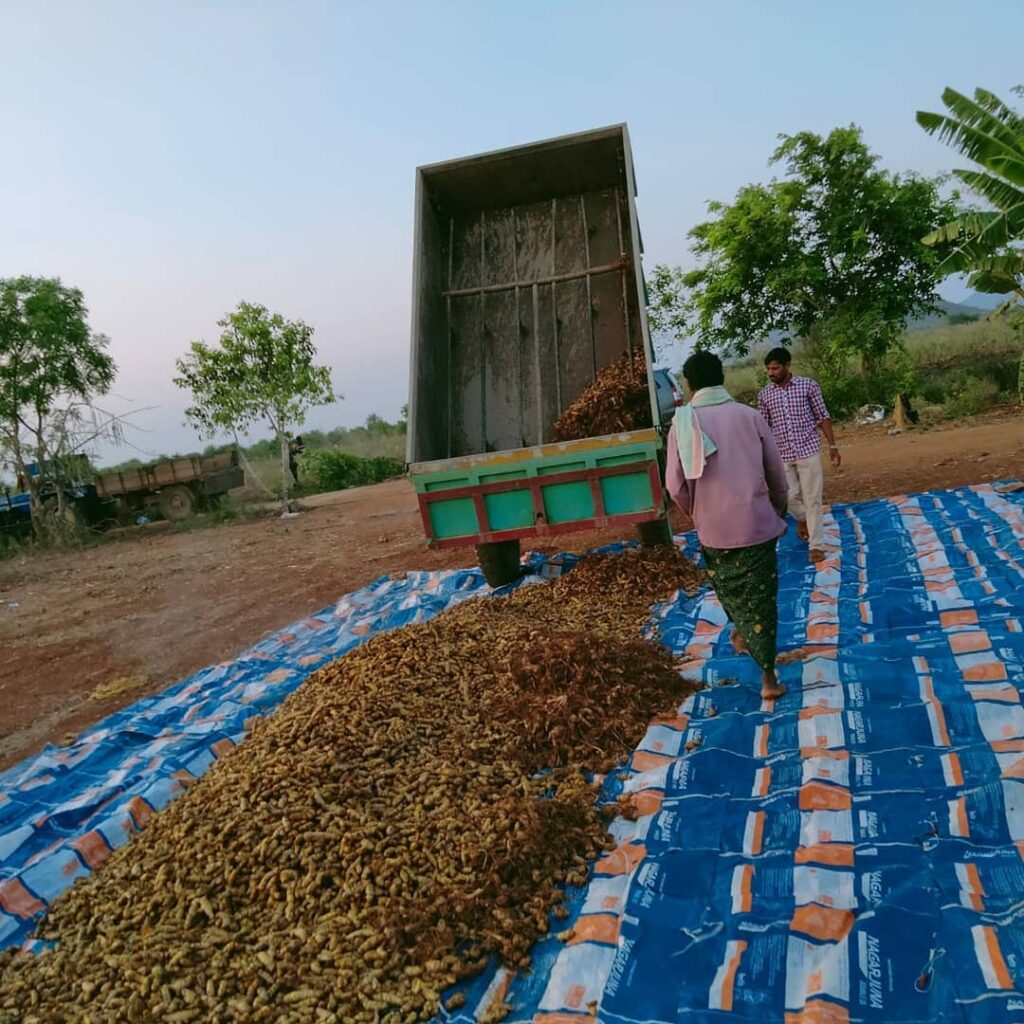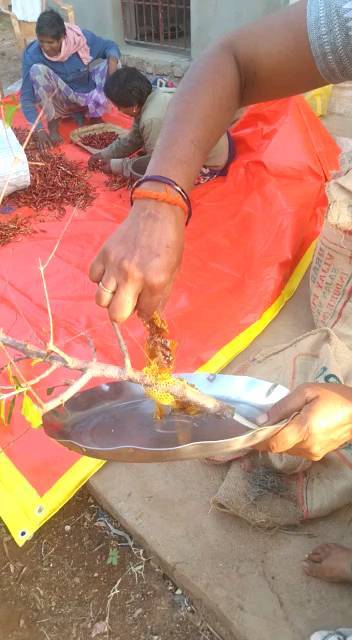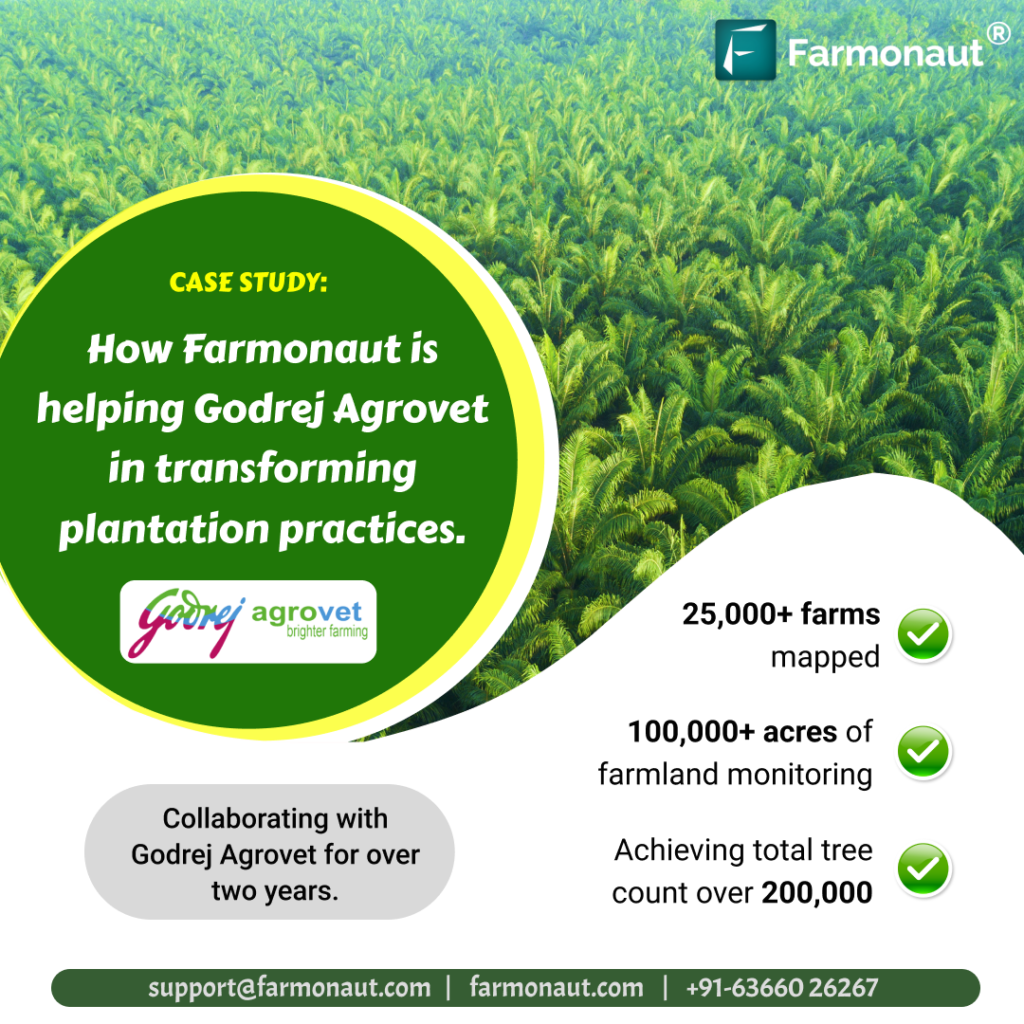Bhumi Organic Cotton: 9 Acres Agricultural Organic Farm—Unlocking Environmental & Economic Value
Introduction: The Rise of Bhumi Organic Cotton & Sustainable Agriculture
In recent years, the global landscape of agriculture has witnessed a significant shift towards sustainable and organic farming practices. Motivated by increasing consumer awareness and mounting environmental concerns, the agricultural sector is embracing new, ethical paradigms.
Among these innovations, Bhumi Organic Cotton—grown on a dedicated 9 acres agricultural organic farm—exemplifies a transformative movement toward eco-friendly cultivation. As we approach 2025, this approach bridges the gap between traditional methods and modern sustainability goals, highlighting the immense potential to revolutionize the textile industry and promote ecological balance.
In this comprehensive blog, we explore how organic cotton farming on a 9 acres organic farm enhances soil health, supports biodiversity, and adds economic value—while providing a scalable, responsible model for ethical agriculture in 2025 and beyond.
Why Organic Cotton? Addressing Global Concerns
The environmental impact of conventional cotton farming is immense—intensive pesticide and fertilizer usage, synthetic chemicals, vast water consumption, and significant soil degradation. This threatens not only biodiversity but also human health and the livelihood of farmers.
By contrast, organic cotton offers a sustainable alternative. When produced on an agricultural organic farm—especially on a 9-acre scale—organic farming avoids synthetic pesticides, fertilizers, and genetically modified organisms. This commitment allows the soil to retain its natural fertility, supports an ecosystem that is robust and healthy, and reduces exposure for farmworkers to toxic substances.
- Consumer Demand: Environmental, ethical, and health concerns are driving consumer awareness of how cotton is grown and what impact it has on the world.
- Industry Transformation: The textile industry is responding to calls for transparency, ethical sourcing, and sustainable methods in cotton cultivation.
- Market Opportunity: Organic farms can access premium markets hungry for eco-friendly products and chemical-free fibers.
The 9 Acres Agricultural Organic Farm Model
The Bhumi Organic Cotton farm utilizes a carefully managed 9-acre organic farm—the perfect canvas to demonstrate that even modest-scale agricultural operations can significantly contribute to sustainability and ecological balance.
What makes a 9-acre organic cotton farm unique?
- Scalability: Easier to manage, monitor, and optimize organic practices.
- Microclimate: Promotes biodiversity and can support polyculture or agroforestry approaches.
- Educational Model: Demonstrates organic principles for farmers in the region, acting as a living classroom.
- Market Focused: Allows targeted sourcing for domestic and international markets with rising demand for organic fibers.
The focus on a dedicated 9 acres organic farm sets a reproducible standard for sustainable agriculture in regions where landholdings are modest, contributing to both local economies and best-practice dissemination.
Stringent Practices: Organic Cultivation Principles On Bhumi Organic Cotton Farm
A cornerstone of Bhumi Organic Cotton’s approach is its stringent commitment to truly organic cultivation:
- Absolutely No Synthetic Inputs: Abstaining from synthetic pesticides, chemical fertilizers, and genetically modified organisms.
- Crop Rotation: Rotating crops to retain soil fertility, enrich organic matter, support microbial life, and control pest cycles.
- Integrated Pest Management (IPM): Using natural predators and ecological strategies to reduce pest pressures instead of toxic chemicals.
- Responsible Water Usage: Practicing efficient irrigation and soil moisture conservation (mulching, cover crops, rainwater harvesting).
- Labor Welfare: Commitment to reducing farmworker exposure to toxins and ensuring fair labor conditions.
By avoiding harmful chemicals, the farm ensures environmental protection, safeguards soil health, and fosters a healthy ecosystem on every acre.
Soil Health, Biodiversity, and Ecological Balance with Bhumi Organic Cotton
Soil health and biodiversity are the lifeblood of organic agriculture on the Bhumi Organic Cotton 9 acres farm. Here’s how these principles translate into real, measurable gains:
- Enriching Organic Matter: Unlike depleted soils in conventional farms, organic cotton fields are teeming with organic matter, nourishing microbes and earthworms.
- Supporting Microbial Life: Absence of agrochemicals allows beneficial microbial communities to thrive—key to nutrient cycling and plant growth.
- Carbon Sequestration: Higher organic matter means improved carbon capture in soil—a crucial factor in combating climate change.
- Extending Biodiversity: Organic cotton fields enhance biodiversity, supporting up to 80% more beneficial insects than non-organic fields.
The result is a farm that isn’t simply productive, but also a keystone for ecological balance in its region—resistant to pests, drought, and disease.
Economic Value & Market Opportunities in Organic Cotton Farming
Beyond environmental benefits, the Bhumi Organic Cotton farm creates real economic value for farmers and communities.
- Premium Markets: Organic cotton fibers meet rising demand from domestic and international markets that reward sustainable farming with higher prices.
- Access to Niche Consumers: Transparent, ethical sourcing aligns with 2025 trends—consumers want to know their products are sustainably grown, free of harmful chemicals, and traceable.
- Resilient Yields: While output per acre may seem modest compared to industrial cotton farming, organic fields often enjoy greater stability, less risk, and lower input costs.
- Rural Revitalization: Small to medium-sized operations can thrive, contributing to rural livelihoods and local economies far more resiliently.
Organic farming practices on Bhumi Organic Cotton’s dedicated 9-acre farm don’t just help the planet—they offer a way for farmers to achieve long-term economic success with a model that is ethical and future-proof.
Tip: If you’re in the agricultural business and interested in traceability for premium markets, explore the Farmonaut Product Traceability solution—it enables supply chain transparency using blockchain for enhanced trust with consumers and buyers.
Technology, Monitoring, and Innovation for 2025’s Sustainable Cotton Farms
With the future of agriculture increasingly data-driven, innovative tools are helping farmers and agricultural businesses optimize resources, reduce losses, and achieve sustainability goals. Satellite-based monitoring, AI-driven advisory systems, and blockchain-based traceability make farm management on a 9 acres organic farm more precise than ever.
- Satellite Imagery & AI: Powerful analytical platforms help monitor crop health, soil moisture, and pest management in real time—empowering informed decisions.
- Environmental Impact Tracking: Digital tools for carbon footprint monitoring and resource use ensure compliance and allow farms to market their eco-friendly status credibly.
- API & Integration: Advanced data can be accessed via flexible APIs, offering actionable insights for farmers, research institutions, and even financial providers.
Learn more about Farmonaut’s API for farm monitoring: Click here
API Developer Docs: Read the API Docs
For large operation management: See how Farmonaut helps manage large farms efficiently using satellite imagery, real-time crop health status, and resource optimization: Large Scale Farm Management
Farmonaut’s platform allows users to access satellite insights instantly via 
Education, Policy, and Scaling the Bhumi Organic Cotton Model
A 9 acres organic farm can become more than a place of production: it’s a hub of knowledge for the entire region. As the adoption of organic farming surges, support from governments and NGOs is increasing.
- Subsidies and Training: Programs providing certification assistance and technical expertise grow annually, ensuring farmers have the tools to transition.
- Educational Outreach: Bhumi Organic Cotton’s farm hosts workshops and invites local farmers to see organic methods first-hand.
- Policy Support: The drive for climate-smart agriculture practices and protection of natural resources aligns with the vision of such farms.
In doing so, a modest-sized farm becomes a key node in a sustainable agricultural network—sharing knowledge, innovation, and best practices.
Agroforestry & Diversified Farms: Going Beyond Cotton for Sustainable Agriculture
Integrating organic cotton cultivation with agroforestry sets the stage for a new agricultural paradigm:
- Multispecies Systems: The mix of trees, shrubs, and cotton crops increases biodiversity, improves soil structure, and naturally reduces pest pressures.
- Water Conservation: Tree cover moderates field temperatures and conserves soil moisture—vital for regions where water usage is a crucial factor.
- Climate Resilience: Agroforestry systems offer greater resistance to weather shocks and long-term climate change impacts.
- Diversified Revenue: Farmers can harvest timber, fruits, or fodder alongside cotton—maximizing the economic value of every acre.
This diversified model of agricultural organic farming is one of the most promising directions for 2025 and beyond.
Comparative Impact Table: Bhumi Organic Cotton vs. Conventional Cotton on a 9-Acre Farm
To fully understand the transformative potential of Bhumi Organic Cotton on a 9 acres organic farm, let’s compare extended estimates of conventional and organic practices:
| Aspect | Conventional Cotton (Estimated Values) |
Bhumi Organic Cotton (Estimated Values) |
|---|---|---|
| Soil Organic Matter (%) | 0.5 – 1% | 2.5 – 3% |
| Estimated Species Count (biodiversity) | 120–150 | 200–250 |
| Water Consumption (liters/acre/season) | 2,500,000 | 1,275,000 (~49% reduction) |
| Pesticide/Fertilizer Use (kg/acre) | 30–50 | 0 (synthetic) |
| Yield per Acre (kg seed cotton) | 400–600 | 350–500 |
| Approx. Profit per Acre ($/acre) | $350–600 | $550–1,000+ |
| Health Risk/Worker Exposure | High (frequent chemical handling) | Minimal (no synthetic chemicals) |
Note: The above values are estimations and can vary based on climate, region, and implementation of best organic agriculture practices. The table illustrates how organic cotton on the Bhumi 9 acres agricultural organic farm delivers tangible benefits for sustainability, soil health, biodiversity, and economic value.
Key Benefits: Summary for 2025 and Beyond—Why Choose Bhumi Organic Cotton?
- Soil Health: Restores fertility and biological life essential for resilient farming.
- Biodiversity & Ecological Balance: Fosters vital insects, birds, and microorganisms; supports ecosystem stability.
- Environmental Protection: Reduces synthetic pesticide and fertilizer use, combats climate change by increasing carbon sequestration.
- Water Conservation: Sustainable irrigation and soil care significantly reduce water consumption.
- Worker & Community Health: Lower exposure to toxins and improved labor conditions mean a safer environment for all.
- Economic Opportunity: Access to premium markets for organic fibers and higher profit margins for small operations.
- Transparency: Blockchain-based traceability (see Farmonaut’s Product Traceability) provides buyers with proof of origin and ethical practices.
If you’re interested in tracking and reducing your farm’s carbon footprint, visit Farmonaut’s Carbon Footprinting page—a tool to show your commitment to environmental responsibility to global buyers and regulators.
Frequently Asked Questions (FAQs) on Bhumi Organic Cotton & 9 Acres Organic Farming
What makes Bhumi Organic Cotton different from regular cotton?
Bhumi Organic Cotton is cultivated strictly avoiding synthetic pesticides, fertilizers, and genetically modified organisms. This means the soil retains natural fertility and biodiversity, protecting both the environment and the health of farmworkers.
What are the main environmental benefits of a 9-acre agricultural organic farm?
Organic cotton farms boost soil health, conserve water, support biodiversity, and significantly reduce chemical runoff and greenhouse gas emissions.
How do farmers benefit economically from organic cotton cultivation?
Farmers gain access to premium, ethical markets that command higher prices for organic cotton, and benefit from lower input costs and improved soil productivity over time.
Can small farms really make a difference?
Absolutely. Even modest 9-acre farms can be models for the region, showing others the environmental and economic gains possible through sustainable organic agriculture.
How does Bhumi Organic Cotton promote ecological balance?
Through crop rotation, integrated pest management, responsible water usage, and preserving native flora and fauna, Bhumi Organic Cotton maintains a healthy ecosystem on every acre.
Why is traceability important for organic cotton?
Traceability (often using solutions like Farmonaut’s traceability) ensures consumers and buyers can verify the product’s origin, organic credentials, and ethical farming methods, building trust and authenticity in the marketplace.
Get Farmonaut: Advanced Satellite Solutions for Sustainable Agriculture
For farmers, businesses, and governments wanting to monitor crop health, soil conditions, environmental impact, and resource management for organic farms or sustainable agriculture, Farmonaut’s platform provides powerful digital tools:
- Satellite-based, real-time data for crop monitoring, resource optimization, and sustainability tracking.
- Blockchain-based traceability for product authentication (learn more).
- Carbon footprinting tools to help farms qualify for green markets (details here).
- Fleet & resource management for cost and logistics optimization (read more).
Conclusion: Bhumi Organic Cotton and The Future of Sustainable Cotton Farming
As environmental challenges persist and consumer demand for ethical products grows in 2025 and beyond, Bhumi Organic Cotton grown on a 9 acres agricultural organic farm stands as a trailblazer. It underscores the importance of organic farming for ecological balance, soil health, biodiversity conservation, and economic opportunity.
By abstaining from harmful chemicals, enhancing transparency, and modeling a new, responsible approach to the textile industry, these farms chart a sustainable path for farmers, communities, and the planet. They embody the future of agricultural sustainability—where modern innovation and traditional wisdom meet for the benefit of all.
For more on advancing your own sustainable cotton farming—with digital insights and transparency—explore our platform’s web and mobile apps, or learn how to manage environmental impacts with Farmonaut’s Carbon Footprinting tools.
Together, we can grow a more sustainable, healthy, and prosperous world—one farm, one field, and one fiber at a time.










